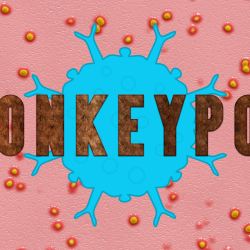It seems that for some, Monkeypox is a derogatory term. I’m unsure whether this has to do with the use of the word "monkey," its association with Africa, or some other ill-defined reason. To be fair, naming diseases is important, especially in a time of social media; we all want to be worrying and arguing about the same problem. Not to worry, the World Health Organization has issued some best practices.
The goal is noble.
“…to minimize unnecessary negative impact of disease names on trade, travel, tourism or animal welfare, and avoid causing offense to any cultural, social, national, regional, professional or ethnic groups.”
Of course, there are caveats. The biggest is that the real name of a new human disease is determined by the International Classification of Diseases (ICD), which is “managed” by the WHO, and that other international systems and bodies have their own “taxonomy and nomenclature of pathogens.”
What’s In
- Generic descriptive terms, like a respiratory disease.
- Specific descriptors unlikely to change, like severe or winter.
- If the causative pathogen is known, it’s allowed, like novel coronavirus
- Names should be short and easily pronounced, like polio or rabies
- Long names often are reduced to acronyms, so they too should not cause offense
- Ideally, names should comply with ICD guidelines
What’s Out
- Geographic locations – say goodbye to Lyme Disease, let alone to the “Wuhan” virus. This change will correct a grievous wrong concerning the Spanish Flu or the 1918 Flu Pandemic. The flu's origins were most likely an army base in Kansas, where it joined our Expeditionary Forces and ravaged Europe at the end of World War I. We will never have a chance to refer to it as the Kansas Flu, but we must stick with the Flu pandemic of 1918.
- People’s names – say goodbye to Chagas disease, caused by the parasite Trypanosoma cruzi. Interestingly, we discussed this form of naming the other day at our weekly writer’s conference. One of us thought it might be fun to get a new disease so that we might have naming rights. But I pointed out that the names appended to these diseases belong to the physician or scientist making the initial diagnosis, not the initial patient. Carlos Chagas was the Brazilian physician in this particular instance.
There is also a move afoot to stop using the term "Patient 0," evidently because it implies that this was the patient that spread the disease to others. "Patient 0" was “a catchy phrase” used by Randy Shilts in his coverage of AIDs.
- Species or class of animals and food – swine and bird flu are both out, same with monkeypox.
- Cultural, population, industrial or occupational references – Legionnaires disease has to go, probably with the blessing of the American Legion, where it was first described at their 1976 convention in Philadelphia. Black lung is in, and the miner’s lung is out. Actually, black lung disease is, unfortunately, alive and well.
- Terms that incite undue fear – the plague is preferable to the black death. God only knows what to do with Ebola. It was first noted by the Ebola River, and it is one of several hemorrhagic viruses. As a vascular surgeon, I can tell you that "hemorrhagic" is a term that incites fear. It has a case fatality rate of about 50%, so fear is not an unexpected response. Its official name is Zaire ebolavirus, but there is that geographical reference again.
Let me leave you with this thought. The connotation of words is frequently in the mind of the writer and reader. The writer, or in this case, the WHO acting as the naming body, tries to avoid implying offensive terms. That does not mean the reader on the hunt for “micro-offenses” will not infer offense when none was intended.
In the interim, after seven weeks, monkeypox has yet to be renamed. As reported by Stat, the name "Orthopoxvirus monkeypox" has the inside track – yes, "monkeypox" is still in. But as Science says, the other contender, “ ‘hMPXV A.1,’ may not roll off the tongue.”
Source: World Health Organization Best Practices for the Naming of New Human Infectious Diseases

